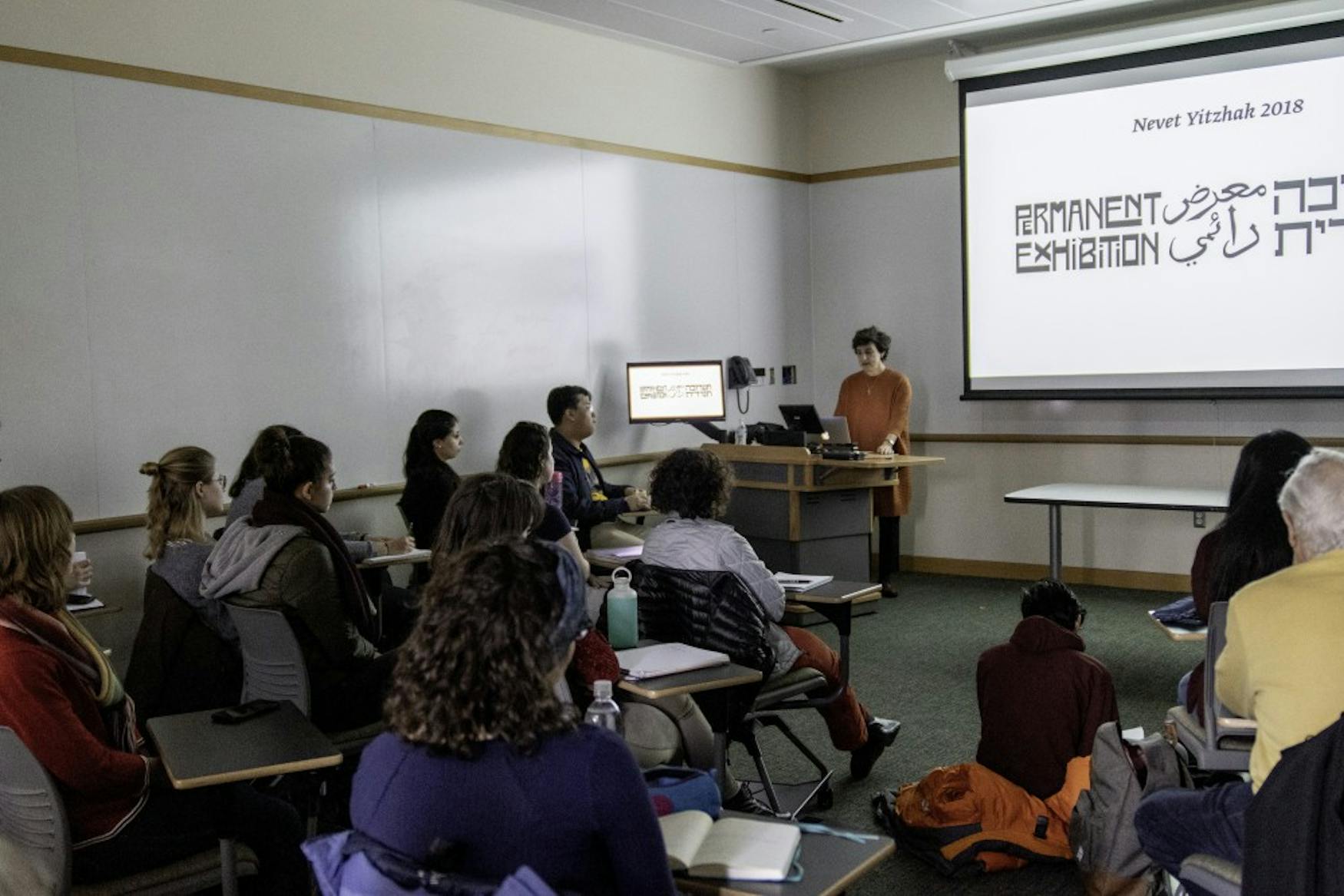Artist examines past and present of Israeli museum
The story of exile from and return to a holy land is a timeless theme in Israeli art, but the artistic medium and style of Zionist representations have adapted to a technologically growing world, Israeli artist Nevet Yitzhak explained to the Brandeis community during her talk Thursday. The event was co-sponsored by the University’s Schusterman Center for Israel Studies and the Isabella Stewart Gardner Museum. Many of the audience members were students of the Fine Arts course “Palestinian and Israeli Art, Film and Visual Culture: Intersecting Visions,” taught by Prof. Gannit Ankori (FA), who also attended the event.
Yitzhak teaches classes in photography and videography at the Bezalel Academy of Arts and Design, Israel’s national school of art, which was founded in 1906 by artist Boris Schatz. Yitzhak is an Israeli artist and has an exhibit in Bezalel’s museum. She started her talk by comparing Bezalel’s artwork at the time of its establishment to Bezalel’s current artwork.
According to Yitzhak, even at the time of its establishment, the style of art in the Academy’s museum was considered “old,” as it was “more 19th century than 20th century.” The museum displayed Jewish sculptures, Jewish paintings and replicas of Hellenistic sculptures. The artworks Schatz collected and displayed in the museum are “seen today as the beginning of Israeli art,” Yitzhak said.
Yitzhak said Schatz “was against modern art,” which at the time included fauvism, cubism and other types of abstract art. Ankori added that Schatz emphasized what he saw as the “European tradition,” particularly pre-modern and Baroque art, in the art he chose to display and teach his students.
The main goal of the artwork in Bezalel was to “make the bridge between 2000 years ago and today,” according to Yitzhak. Much of the art in the museum is based on Zionism in the 20th century, along with what life was like for Jews in those 2000 years between their exile from and return to the holy land. One exhibit in the museum, The Hall of Tears, represented the suffering Jews underwent in this diaspora, according to Yitzhak. In the middle of the hall, there is a pedestal on top of which a glass box rests, holding a “Torah scroll with Jewish blood on it,” per Yitzhak.
While this art connects Jews to their ancient past, the museum lacks Palestinian and Ottoman art produced during the diaspora, meaning that “different levels” of history have been “deleted,” Yitzhak said. In Bezalel’s early years, Muslims or Christians could not enter the school and museum of Bezalel, she added.
Today, the Bezalel Academy is very different, Yitzhak explained. Both the form and content of the art in Bezalel today have changed from how it was when the museum was first established. No longer constrained to housing only Baroque art, the museum also holds Yitzhak’s exhibit, “Permanent Exhibition,” which is digital.
In it, large carpets are mounted on walls, and animated images are projected onto them. These depict Biblical stories and passages. One of the artist’s own works, which she showed the audience, read “Jerusalem I will never forget you” in Hebrew. In another piece, she hangs what look like china plates onto a wall. On these plates, the animated heads of Zionist figures are projected. These animated heads are responding angrily to Herzl’s proposal of the Uganda Congress. This references the historical event in which Herzl proposed that Jews find a home in Uganda, an idea that many Zionists opposed. This debate is depicted in the conversation among various figures projected on the plates.
According to Ankori, Yitzhak’s work “melds East and West.” In another of Yitzhak’s works, she links Zionism to Persian mythology. One Persian story tells of an island ruled by women, in the middle of which lies a tree called the “vak vak” tree. Instead of fruit, the tree bears heads of animals and people, which talk to each other. She decided to place the heads of Zionism on a digitally-created “vak vak” tree. This kind of incorporation of Eastern stories and modern art styles in Zionist art separates Yitzhak’s art from earlier artworks in the museum.



Please note All comments are eligible for publication in The Justice.